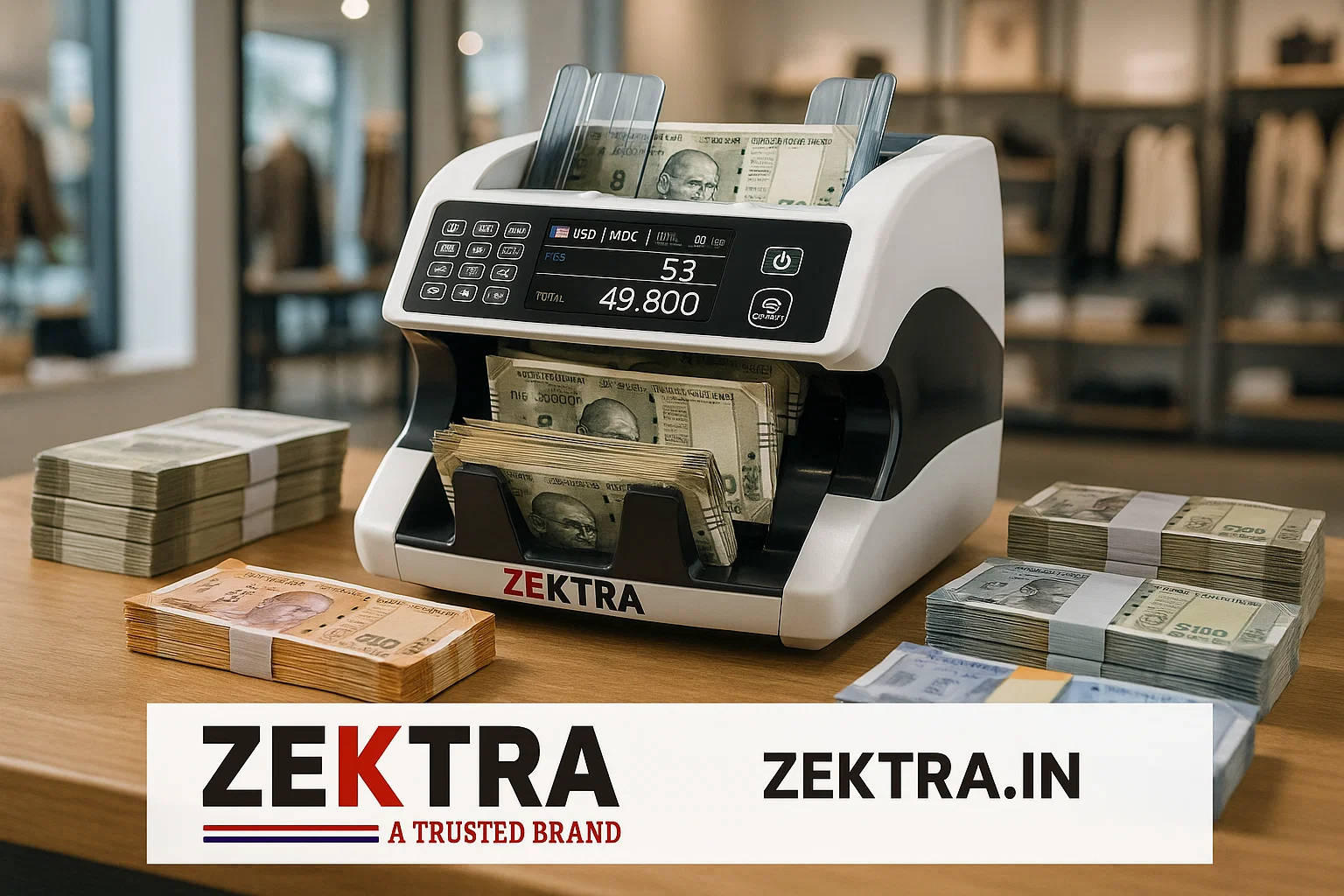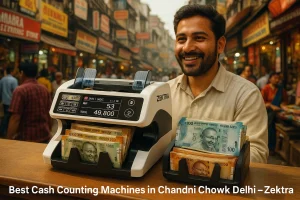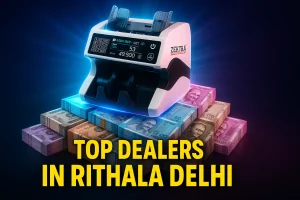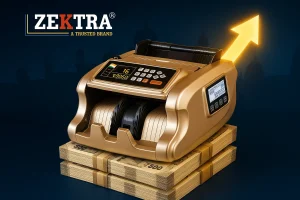If you handle cash—whether you’re a retailer, petrol pump, hospital, pharmacy, jewellery store, wholesale trader, or an SME—manual counting eats hours, causes errors, and increases stress. A modern cash counting machine:
- Counts fast and accurately
- Flags suspected counterfeit notes
- Helps prepare end-of-day (EOD) summaries
- Reduces shrinkage and staff fatigue
- Pays back its cost in weeks, not months
Quick win: Even saving 20 minutes a day at ₹300/hour labor cost returns ~₹3,000/month—enough to offset a large part of the machine’s price within a short time.
How a cash counting machine works (simple)
- Feeding: Notes are placed in the hopper.
- Transport: Rollers move notes one by one at high speed.
- Sensing & Validation:
- UV checks paper fluorescence patterns
- MG senses magnetic ink/threads
- IR checks note patterns/absorption
- CIS (Color Image Sensor) analyzes color/size/layout for advanced authenticity checks
- Counting & Output: The total count (and on value models, the denomination-wise value) appears on the display. You can use Batch and Add modes for bundling and running totals.
Types of cash counting machines
- Loose-Note Counters (Count-only):
Great for pre-sorted bundles (₹10/20/50/100/200/500). Add/Batch functions help bundle quickly. - Mix-Note Value Counters:
Identify denominations automatically and show total value and denomination breakdown—ideal when notes are mixed. - Portable/Desktop Compact:
Smaller footprint for counters with limited space; suited to shops, kiosks, events. - Advanced Verification Units:
Add CIS image analysis, serial capture (on select models), multi-currency presets, and printer/USB ports.
Key specs to check (plain-English checklist)
- Counting speed: Look for 800–1200 notes/min for retail; banks often prefer ≥1200.
- Hopper/Stacker capacity: Larger capacity = fewer refills.
- Detection tech: UV + MG + IR is baseline; CIS adds a deeper check.
- Value counting: Needed if you regularly count mixed denominations.
- Modes: Batch (make packs of 100/200), Add (carry totals), Report (denomination summary on value counters).
- Display & usability: Clear screen, robust keys, error codes that make sense.
- Build & serviceability: Dust-resistant path, easy access for cleaning.
- Warranty & support: Long warranty + quick service = less downtime.
- Voltage stability & reliability: Important for Indian conditions.
- Compliance & safety: Opt for reputable brands that focus on reliable counterfeit detection for INR notes.
Where a machine makes the biggest difference
- Retail & supermarkets: Fast checkout, fewer EOD errors
- Petrol pumps: Long shifts, heavy cash volumes, accuracy is crucial
- Hospitals & pharmacies: Continuous counters, minimal interruption
- Jewellery & electronics: High-value transactions, zero tolerance for counterfeit
- Wholesale & mandi traders: Bulk counting, batching, frequent summaries
- Banks/NBFCs/Fintech Cash Points: Verification + value counting at speed
Mini ROI example (use this in your pitch)
- Time saved daily: 25 minutes
- Staff cost: ₹300/hour
- Days open: 26 days/month
Monthly saving = 0.42 hr × ₹300 × 26 ≈ ₹3,276
If your machine costs ~₹10,000–₹22,000, you can break even in a few months—plus you avoid losses from miscounts or undetected fake notes.
| Model (example) | Best for | Core function | Typical speed | Detection | Size/Use |
|---|---|---|---|---|---|
| Zektra Handy V-30 | Small counters, on-the-go | Compact loose-note counting with basic UV/MG/IR | ~800–1000 notes/min | UV, MG, IR (typical) | Portable/desktop |
| Zektra CIS Scan Master | Retailers needing higher trust | Loose/mix counting with CIS-based authenticity checks | ~1000 notes/min | UV, MG, IR, CIS | Desktop |
| Zektra Z-100 (Mix Value) | Mixed cash all day | Value counting + denomination summary | ~1000 notes/min | UV, MG, IR (and advanced checks if configured) | Desktop |
Daily care & troubleshooting
- Dust is the enemy: Clean rollers/sensors with a soft brush or recommended cleaning cards weekly (daily in dusty stores).
- Don’t mix damp/torn notes: Pre-sort very damaged notes; they can jam and skew counts.
- Use stable power: Spike guard/UPS prolongs life.
- Run a test stack: When switching denominations or after cleaning, run 20–30 notes as a quick check.
- Keep logs: Note any error codes; it speeds up service calls.
Common mistakes to avoid
- Buying count-only when you actually need value counting (mixed cash).
- Ignoring after-sales support—cheap units with no service cost more in downtime.
- Skipping training: Teach staff Batch/Add and what to do when the machine flags a suspect note.
- Placing machines in direct dust/grease zones (kitchen, open road-facing tables).
Ready to upgrade?
Cut counting time, reduce errors, and add a layer of protection against counterfeit losses.
ZEKTRA INTERNATIONAL
108-B, 1st Floor, Pal Mohan Plaza, Karol Bagh, New Delhi – 110005
Helpline: 9999504063




